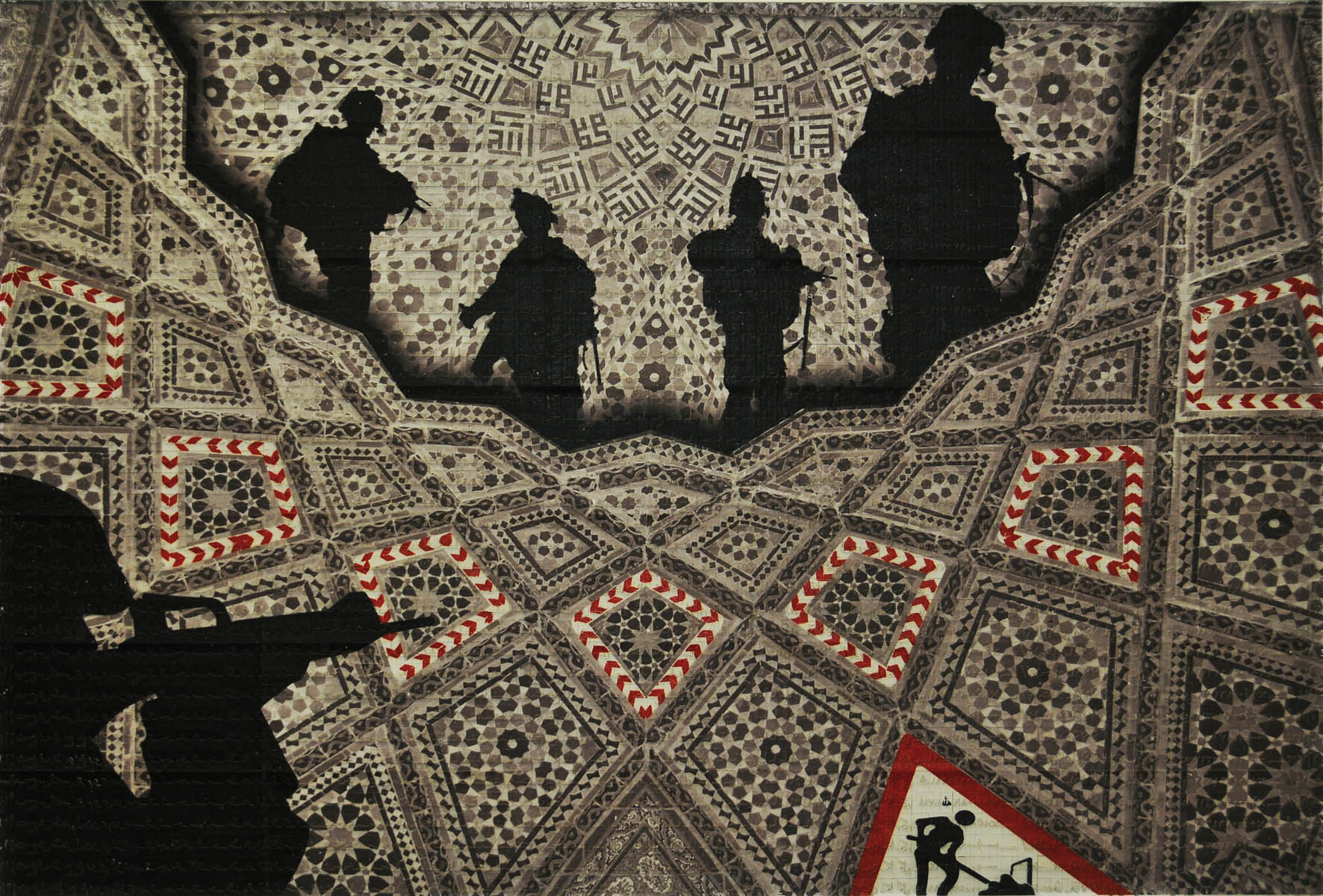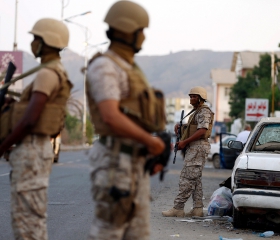The Sykes-Picot Agreement And Russia
Sykes-Picot agreement map 1916
(votes: 3, rating: 4.67) |
(3 votes) |
RIAC Vice-President, President of the Institute of Oriental Studies of the Russian Academy of Sciences
For almost four centuries – from the beginning of the 16th century until the end of World War I – most Arab countries were represented by Vilayets (provinces) of the Ottoman Empire while the western part of the Arab East was by that time already under the rule of colonial powers, England and France. In 1916, London and Paris secretly agreed on a future division of the Asian part of the Ottoman state, which was suffering defeat in the war. Under these agreements, after the defeat of the Ottoman Empire, the Arab vilayets were to come under the mandate of these powers. Their representatives, Britain’s Sir Mark Sykes and Francois Georges-Picot of France went down in history as the authors of the first hastily put together version to colonially divide the Asian part of Ottoman Turkey.
For almost four centuries – from the beginning of the 16th century until the end of World War I – most Arab countries were represented by Vilayets (provinces) of the Ottoman Empire while the western part of the Arab East was by that time already under the rule of colonial powers, England and France. In 1916, London and Paris secretly agreed on a future division of the Asian part of the Ottoman state, which was suffering defeat in the war. Under these agreements, after the defeat of the Ottoman Empire, the Arab vilayets were to come under the mandate of these powers. Their representatives, Britain’s Sir Mark Sykes and Francois Georges-Picot of France went down in history as the authors of the first hastily put together version to colonially divide the Asian part of Ottoman Turkey.
Sykes started travelling in the Middle East at the age of 11 with his parents, the eccentric Sir Tatton Sykes, who, according to his biographers, was only interested in church architecture, maintaining a constant body temperature and milk pudding, as well as the alcoholic Lady Jessica. He remained an amateur explorer and author of a short book titled The Caliph’s Last Heritage, although he did a spell as an attaché at the British Embassy in Constantinople. He cultivated a reputation of a connoisseur of Arabic and Turkish languages, although he had command of neither. Nevertheless, the young ambitious baronet made a good career as a politician and expert on the region.
Georges Picot, as one English author wrote, had France’s “civilizing mission” in Asia in his blood. Before World War I, he served as the Consul-General of France in Beirut and maintained active contacts with Arab nationalists. Both he and Sykes were arrogantly convinced that the Arabs had not yet matured enough to run their lands by themselves.
When these architects of the colonial conquest of the Ottoman Arab provinces were charged with delimiting the spheres of influence of the two powers, they simply drew an almost straight line in the sand in November of 1915 between the Palestinian city of Akko near Haifa on the Mediterranean coast and Kirkuk in northern Iraq, which came to be known as the E–K Line (“E” for the last letter in the English name of the first city, Acre, and “K” for the first letter of the name Kirkuk). The area south of the line was to be dominated by Britain, and the area to the north by France. England broke the promise conveyed to King of Hejaz Sharif Hussein through its high commissioner and Governor of Egypt Sir Henry McMahon to support the project to create a united Arab state under his aegis in Mashriq, the eastern part of the Arab world, in exchange for his participation in the war against the Turks. Although the plan of the two authors of the post-war disposition of the Arab East was strictly provisional and they continued to vie with each other for mandate territories for several more years, it went down in history as the secret Sykes-Picot Agreement, becoming a symbol of the colonial enslavement of the Arab people. It was signed on May 16, 1916.
This year saw the centenary of the Agreement, which prompted debates in many countries linking the events of World War I to the crisis that has befallen the Middle East region today. The thesis about the “collapse of the Sykes-Picot system”, which established borders that ignored the historical, geographical and demographic realities of the region, gained currency. It is often forgotten that the 1915–1916 agreements between England and France actually did not establish borders between the future territories/states formed in Mashriq. This was done later, at the Paris Peace Conference (January 18, 1919 – January 21, 1920), in the Treaty of Sevres of (August 10, 1920), and at conferences in San Remo (April 19–26, 1920) and Lausanne (sporadically between November 20, 1922 and July 24, 1923). In addition, part of the Anglo-French plan for administering Mashriq was the Balfour Declaration, a letter from the British Foreign Secretary Arthur Balfour to Lord Rothschild dated November 2 expressing London’s approval of the “establishment in Palestine of a national home for the Jewish people” that was to be passed on to the Zionist Federation.
These conferences also discussed the issue of the Black Sea straits, which was strategically important for Russia. The problem of the passage of Russian ships through these straits – Bosphorus and Dardanelles – had worried Russia since the 19th century, because England constantly tried to block its interests. Against the background of a rivalry with Turkey the idea of resorting to military force was mooted periodically from the time of the reign of Alexander I until Nicolas II. At the start of the war of 1806–1812, Minister of the Navy Pavel Chichagov worked out a plan to land on Bosphorus and storm Constantinople. Russia considered this plan again in the late 19th century.
However, in entering World War I, Russia did not seek to make any territorial acquisitions; it merely wanted to weaken Germany and ward off the threat of German domination of Europe and the strengthening of Austria-Hungary in the Balkans. Nor did it raise the issue of occupying the Black Sea straits. Before long, however, the position on the Straits changed: Minister of Foreign Affairs Sergey Sazonov, an Anglophile who hated Germany, told the English and French ambassadors that in concluding peace Russia must “ensure for itself free passage through the Straits once and for all.” However, even then there was no question of territorial expansion into the Middle East.
The situation around the Straits changed dramatically after Turkey entered the war. It was at this point that Nicolas II declared that Turkey’s “reckless interference” would “pave the way for Russia to resolve the historical tasks on the shores of the Black Sea bequeathed by the ancestors.” There followed difficult negotiations with the Entente partners, England and France. While these powers, looking to defeat the Ottoman state, were primarily concerned with dividing the Turkish vilayets between them, the Russian authorities sought to solve the task of ensuring control over the straits and were inspired by the prospect of taking over Constantinople, a long-time dream of several Russian tsars. On February 19, 1915, Sazonov sent a note to the English and French ambassadors demanding that “the western bank of the Bosphorus, of the Sea of Marmara and of the Dardanelles, as well as southern Thrace to the Enez-Midye line, as well as part of the Asian coast between Bosphorus, the River Sakarya, and a point to be determined on the shores of the Gulf of Izmid, the islands in the Sea of Marmara, and the islands of Imbros and Tenedos,” should henceforth be incorporated into the Russian Empire (the draft of the document was prepared at the Russian Foreign Ministry by Boris Nolde and Konstantin Gulkevich). As a result of the exchange of messages between the three powers, England and France accepted Russia’s terms and Russia acceded to the demands to take English and French interests in Asian Turkey into account and even revise the Anglo-Russian Entente of 1907 recognizing the neutral zone as British. It is reasonable to assume that the successes of the Russian army that occupied Erzurum and Bitlis in February 1916 played no small role in the Entente partners being so “accommodating.” In late November 1916, after the Sykes-Picot Agreement, Russia planned the so-called the Bosphorus Operation, in which the main force was to be the Black Sea Marine Division under General Alexander Svechin with Rear Admiral Alexander Kolchak as the overall commander. However, the operation was postponed until April 1917 because part of the force was dispatched to Romania and was then shoved under the rug in connection with the February Revolution.

Abdulnasser Gharem, Men At Work, 2010
Vasily Kuznetsov:
The Middle East: Postmodernism Is Over
Going back to the Sykes-Picot Agreement, it has to be noted that St. Petersburg must have been aware of the Russian plan to resolve the Straits issue being ambitious. First, the West European allied powers made their consent conditional – in addition to Russia accepting the division of the Ottoman Empire’s Arab vilayets between England and France, continued free trade through the Straits and the establishment of a “free port” regime in Constantinople – on total victory over Turkey (“if the war is brought to a successful end”). London and Paris, having experienced some bitter defeats in the war, were not sure that they could overcome the Ottomans without Russia. They assigned the key role in the war to Russia, putting it under great strain. Secondly, the issue was to be officially settled in a future peace treaty, and it was not at all clear how London and Paris would behave after Turkey was vanquished. Thirdly, to uphold its own positions, Russia needed powerful levers in order to exert pressure on its Entente partners, something it unfortunately did not have. It is not by chance that most Russian historians consider St. Petersburg’s agreement with London and Paris to be a kind of IOU, payment for which had yet to be extracted.
Finally, and most importantly, Russia’s accord with the Entente countries did not mean that it would join the project of colonial conquest in the Middle East. In effect, the projected expansion to the Straits was a reaction to the attempts of the Ottoman Empire, which had entered the war against Russia in alliance with Germany, to deprive it of vitally important access to the Mediterranean. We should not forget that Russia never harboured annexationist plans in the Middle East, something the Arab Muslim will forever remember. The fact that the medieval Russian principalities did not take part in the Crusades has always been highly appreciated by people in these countries, and continues to be so to this day.
It would be wrong, as some brash commentators do, to blame everything on the Bolsheviks, who had “undermined the morale of the army.” Their agitation fell on fertile soil. War-weary Russian soldiers did not have enough motivation to risk their lives to seize the Ottoman capital, unlike the Soviet soldiers who stormed Berlin in 1945. I would hazard a guess that in any case the operation to occupy the Straits and Constantinople would not have been a cakewalk.
That is why the Russian Empire could not be seen as a party to the Sykes-Picot Treaty, even if the October Revolution had not intervened. This is borne out by the name of the Treaty which, not accidentally, does not mention Russia.
I have to go along with Elena Suponina, who writes that when people recall the Sykes-Picot Agreement “they remember how unceremoniously the Western powers dealt with the legacy of the Ottoman Empire, dividing it in their interests and ignoring the local population.”
Unfortunately, attention to this topic today has not produced works based on new archival and documentary materials and boils down, with a few exceptions, to a mass of journalistic and purportedly analytical speculations in the media, and very pretentious speculations at that. Suffice it to mention the bizarre idea of renaming the above agreement the “Sazonov-Sykes-Picot Agreement.” One of the most ardent authors of this idea, who often appears on television and calls the October 1917 Revolution “treacherous,” inveighs heavily against the Bolsheviks for “publishing these secret protocols which allegedly were patriotically supportive of the state… and proclaimed their idiotic policy.” If by “idiotic policy,” he means the policy of supporting national liberation movements, it has to be remembered that it was directed precisely against those Western powers whose hostile actions in the Straits region Russia has always feared (and, unfortunately, has grounds to fear even today).
Of course, we can dream naively about how well Russians would be living today if the country owned Constantinople, Alaska, part of California, Port Arthur with the Chinese Eastern Railway, Hawaii (whose local king sought the protection of Alexander I on May 21, 1816, promising to be loyal to the Russian crown) and New Guinea (think of Mikluho-Maclai). But one shudders at the thought of what Russia’s relations would be like with its powerful southern neighbour, Turkey, if it had taken away the city that had served as its capital for half a millennium – ever since 1453, when the army of Sultan Mehmed II took Constantinople, which until that time had been the capital of Byzantium (and not Russia). Instead, Soviet Russia helped Turkey uphold its independence and sovereignty and hopefully the Turkish people remember that. One sign of this is the sculpture of the Soviet military commander Semyon Aralov, the first head of the Field Headquarters of the Revolutionary Military Council of the Republic, the forerunner of the Main Intelligence Directorate of the General Staff of the Armed Forces of the Russian Federation.
The publication in Soviet Russia of the secret “patriotic protocols” of Sykes-Picot exposing the “imperial plans” of the Tsarist regime gave a boost to its popularity in the Arab East. To this day, Russia has a huge reputational edge there because after the Revolution and the end of World War I it resolutely dissociated itself from Western European colonialism and started supporting the national liberation movements of the peoples in the region. The leading Western European powers will continue to reap the bitter fruit of their colonial domination for a long time yet. It is not by chance that the crazy idea of retrospectively including Russia (in the person of its foreign minister, Sazonov, who incidentally, was sacked in July 1917 and replaced by Boris Stürmer) in the project of colonial conquest of the Middle East meets the approval of some of Russia’s foreign ill-wishers, as far as I can judge by the social networks and debates at a number of conferences. Well, and where does patriotism come in?
The above-said does not mean that Russians should not be proud of the military exploits of their grandfathers and great grandfathers in the battlefields of World War I, their self-sacrifice and heroism. My grandfather fought in that war. Unfortunately, I never got to meet him, but I honour his memory.
(votes: 3, rating: 4.67) |
(3 votes) |






